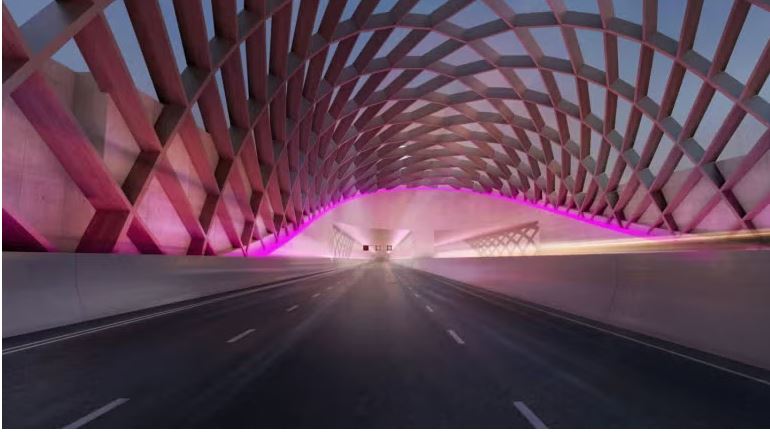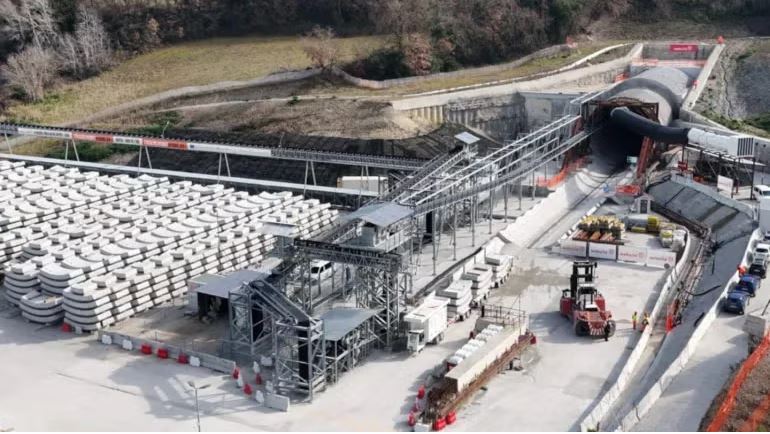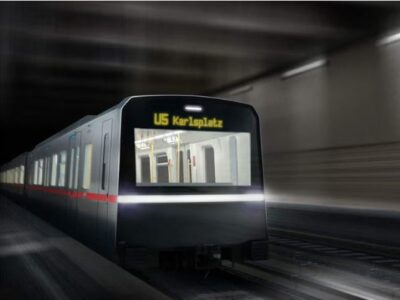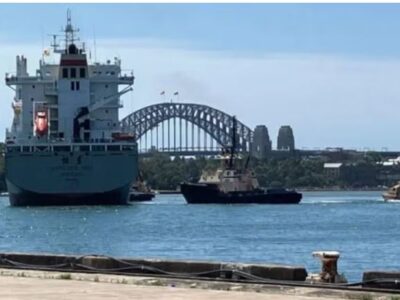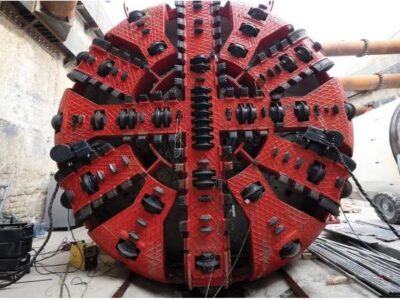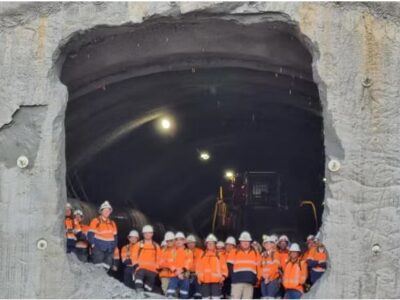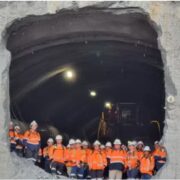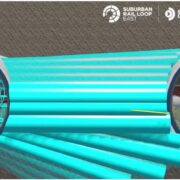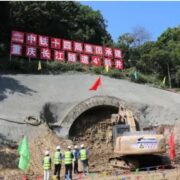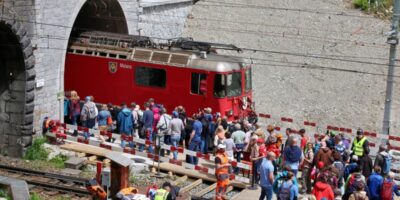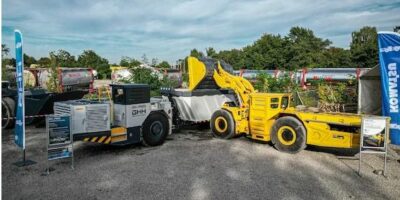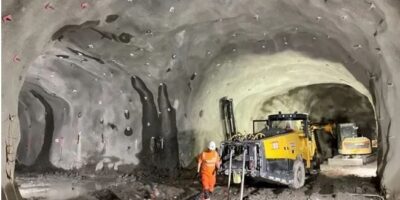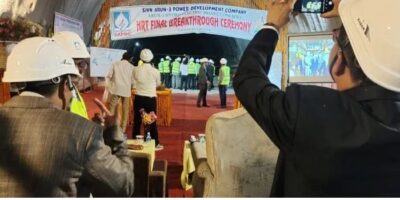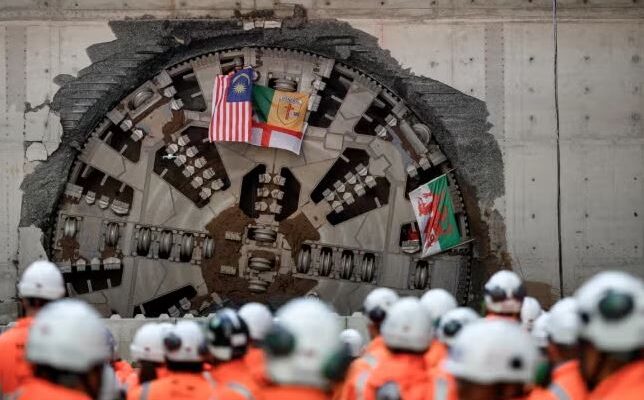
The high-speed railway’s first tunnel bore in the West Midlands was completed by HS2.
While on July 2023 TBM Mary Ann was commissioned from the Warwickshire village of Water Orton by Balfour Beatty Vinci (BBV), this machine broke through in the Birmingham suburb of Washwood Heath after completing the 5.8km excavation for the Bromford Tunnel.
The scheduled date for commencing the second bore by TBM Elizabeth is later this year and the next phase after excavation will be fitting out the tunnel with cross passages, concrete finishing works and base slabs, and emergency and maintenance walkways.
The team’s work location over the 22-month-long tunnel drive, on board the 1,600-tonne TBM was at depths of up to 40m and they navigated Mary Ann beneath the Park Hall Nature Reserve, the M6 motorway, and the River Tame, which they crossed four times, with a headspace as low as five metres.
As the nerve centre of HS2’s operations,the Washwood Heath site, was the place that Mary Ann broke through. With the aim of that trains to be serviced and stored, and the real-time operation of the railway to be controlled, next to the tunnel portal, HS2’s Depot and Network Integrated Control Centre is due to be built.
The quantity of spoil that during the tunneling prouduced by TBM Mary Ann was almost one million tonnes. Considering HS2’s sustainability policy, the dug earth is being reused to support construction of the nearby Delta Junction, a network of 13 viaducts that will enable high-speed trains to travel between London, Interchange Station in Solihull and Birmingham Curzon Street Station.In order to minimising the number of construction vehicles on public roads, the excavated material is transported via dedicated haul roads.
The daily advancement of TBM Mary Ann, named after Warwickshire-born writer better known by her pen name George Eliot, at peak production was around 30m.
The BBV’s pre-cast factory at Avonmouth near Bristol was the place of manufacturing segments installed along the tunnel. The TBM lined the tunnel walls with 20,797 individual segments, making 2,971 concrete rings to form the tunnel.
According to HS2 Ltd’s chief executive, Mark Wild: “This breakthrough was a significant milestone for the project and I am proud of the people who had built the tunnel. Washwood Heath is set to become one of the most important sites on the entire HS2 network – the point at which the railway will be operated, controlled and maintained using the very latest digital technology. HS2’s construction is transforming the West Midlands, and the £10bn investment boost it is already driving across the region will multiply in the years ahead.”
Celebrating the arrival of the first TBM into Birmingham, Balfour Beatty Vinci’s tunnelling director, Jules Arlaud, said: “It’s been a challenging drive beneath critical live infrastructure and through complex ground conditions. I’m incredibly proud of our entire team, whose expertise, dedication and resilience has made this possible.This achievement follows years of design, planning and preparation from BBV, in close collaboration with HS2 and our partners. The team will now move onto the next phase of work inside and outside of the tunnel, while our second TBM, Elizabeth, continues to make great progress on the second drive.”
Including 11 local apprentices, BBV’s tunneling team were recruited and upskilled for the job in partnership with Solihull-based Rorcon and national company Tunnelcraft.
HS2 says in the West Midlands alone, around 10,000 people are currently supporting HS2’s construction programme. Some 710 people from the region have secured an apprenticeship on the project and 1,870 people who were out of work have started new careers. Local firms are also playing a major role in the construction programme, with over 400 local businesses now engaged in HS2’s supply chain.
Around 31,000 people now employed on the project across the 225km route. Despite recent progress, HS2 is undergoing a fundamental reset to make sure the railway can be delivered efficiently and for the lowest feasible cost.


